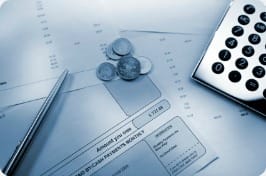Home Economics Teacher Certification

Fifty years ago, female high school students sat in home economics classes learning how to sew aprons and can apricot preserves while their male counterparts built rudimentary shelves down the hall in woodshop. Although home economics no longer exists in this old-fashioned form, it has not disappeared – not even close. Instead, home economics has evolved into a curriculum that focuses on modern theories in child development, nutrition, family health, food service and financial responsibility. In its present structure, home economics continues to be as important to education as ever before.
On This Page…
Although home economics used to focus specifically on women’s duties within the household, it has expanded to teach all students life skills that will carry them through their responsibilities as individuals, family members, homeowners and community members.
No other high school class incorporates as many pertinent life skills in its curriculum as home economics. Certified home economics teachers can teach their students to succeed in all aspects of their lives, regardless of their eventual career paths.
What is Home Economics Teacher Certification?
A home economics teacher certification indicates that a teacher has met a set of requirements to show that he or she is qualified to help students gain the skills they’ll need to transition smoothly into independent life. Home economics teachers educate their students about financial responsibility, healthy cooking, household management and more. Teachers can become certified through a state-specific process where candidates must complete teacher education programs, and often must pass exams as well.
Teachers who are certified in home economics education will have the most up-to-date tools and theories available to impart important knowledge onto their students.
To become certified as a home economics teacher, you may have to first earn a general education degree, and then pursue a specialized certification. Often, your college or education program instructors or counselors will have more specific information on certification. However, because certification requirements are different for each state, prospective teachers can begin by learning more about their state’s teaching certification requirements here.
Why A Home Economics Teacher is Important
- The number of overweight adolescents in America has tripled since 1980
- Obesity in children and adolescents is generally caused by lack of physical activity, unhealthy eating patterns, or a combination of the two.
- Only 21 percent of young people eat the recommended five or more servings of fruits and vegetables each day. Nearly half of these vegetable servings are fried potatoes.
- Being overweight during childhood and adolescence increases the risk of developing high cholesterol, hypertension, respiratory ailments, orthopedic problems, depression and type 2 diabetes as a youth.
- Overweight adolescents have a 70 percent chance of becoming overweight or obese adults
Home economics in the 21st century has moved beyond sewing and baking lessons to skills that are necessary to turn today’s students into responsible adults. The new value of home economics classes is their ability to teach students – especially those who may lack the appropriate role models – the skills that will help them through their lives regardless of their post-high school choices.
By focusing on indispensible life skills, home economics promotes successful careers and strong families, and how to balance the two. Certified home economics teachers help students develop the skills to strengthen the well-being of individuals and families; become responsible citizens and leaders; manage resources to meet financial needs; and address and mediate problems in family, community, and work environments.
In order to succeed in class, home economics students are made to apply knowledge and skills commonly associated with academic success in other courses as well, such as reading, writing, math, science, art and social studies. Students are also encourages to learn current technology in the context of life management and career preparation.
Students also acquire the necessary skills to make good choices regarding nutrition, finances, home ownership, and more, while balancing personal, family, and work responsibilities. Certified home economics teachers can equip students with the skills to feel comfortable with topics as varied as child development and guidance, consumer responsibility, and housings and furnishings.
Even a simple trip to the grocery store will be full of information taught by a home economics teacher – students will remember why candy bars are in the checkout line instead of spinach. A student may also realize that pricing products as $9.99 instead of $10.00 is a marketing ploy, and will likely put more thought into their purchasing.
Preparing to Lead a Home Economics Classroom
According to a 2004 survey by the National Coalition for Family and Consumer Sciences Education, the number of secondary school students who take FSC classes has not substantially changed since the late 1950s. About 25% of all students were enrolled in a home economics class during the 2002-2003 school year, roughly the same percentage cited in a 1959 Department of Health, Education and Welfare study.
To prepare for your home economics teacher certification, which in turn prepares you for the classroom; you will begin by studying multiple disciplines that are essential to everyday life. The content of home economics certification tests may vary, but will likely include questions on food, nutrition, and health; personal finances; family resource management; textiles and clothing; shelter and housing; household management; and child development. These topics will then determine your lesson plans and goals for your classroom.
A fun way to wrap up the lessons of a home economics class at the end of the year is to put students in charge of planning and hosting a class party. Students will be responsible for everything from choosing a theme for the party, finding recipes, and cooking party food, to creating a budget and a shopping list. By giving the students this level of responsibility and showing them the pride of the reward that comes with it, the lessons of the year will be put into context.
Healthy Cooking
Some of the most broad-based subjects that a home economics teacher will tackle in the classroom are cooking and nutrition. Although class will likely include fun, hands-on lessons on baking treats like cookies and cupcakes, the certified home economics teacher also has a responsibility to teach students about the importance of nutrition and the hidden traps of unhealthy eating.
In the early days of the 20th century, home economics classes were often a student’s first introduction into subjects like the importance of washing hands and not feeding coffee to babies.
These days, the convenience and availability of pre-packaged, processed food mean that too many Americans don’t know how to cook, and don’t know how to eat for optimum nutrition. More than half of all adults and more than a third of all children are overweight, and chronic diseases associated with weight gain are on the rise. A home economics education can help students learn about portion control; healthy distribution of carbohydrates, proteins and fats; and how to make delicious, nutritious meals from scratch.
Within these cooking lessons, students will learn how to read and convert recipes, prepare food, and practice cooking safety.
Family Life and Relationships
Home economics classes emphasize the importance of a healthy family life, without ostracizing students who may come from less than ideal family situations. Instead of making students feel like their families need to be perfect, home economics teachers emphasize the importance of dealing with stress and conflict inside a family, personal responsibility, and family safety.
One of the most important lessons that a certified home economics teacher can impart upon students is that it is impossible to change their family’s behavior, no matter how they wish they could influence it. The mistakes of a student’s parents are not his or her fault, and the student bears no responsibility for them. The student is only responsible for how he or she reacts to family members and situations.
Students will learn how to deal with their parents and siblings now, and also how to prepare for family life in the future. Lessons on caring for aging parents, dealing with divorce or abuse, pregnancy health and lessons on child development will prepare students to handle a variety of situations.
One of the most recognizable school assignments in pop culture comes from a home economics class: pairing male and female students into duos charged with protecting an egg as if it was their own baby. For a modern take on this iconic exercise, home economics teachers should touch on alternate ways to build families like adoption, assisted reproduction techniques and foster care. The teacher could take this a step further by having students pull strips of paper describing their “children” out of a hat – some could have a girl, some could have a boy, a few could have twins by in vitro fertilization, and a few could meet their children through domestic or international adoption.
Financial Responsibility
A certified home economics teacher is often a students’ first introduction to financial literacy and responsibility outside the home. By learning how to manage their money, take on responsible debt and understand interest and taxes, children will be prepared to keep healthy savings balances and plan for retirement once they begin their adult lives.
In a home economics course, students will learn how to open checking and savings accounts – something that they could do as soon as they have the minimum balance amount, whether donated by their parents or earned through odd jobs. They’ll also learn skills and awareness that will become useful in the near future, like understanding credit card fees and keeping track of when bills are due. One of the most important things that a home economics teacher can teach students is the value of interest – both the “real” price of items bought on credit and the “future” value of money saved in a high-interest account.
By setting up imaginary budgets complete with debt burdens, income and ordinary monthly expenditures, students can practice dealing with the financial hurdles that come with fiscal responsibility. For example, a home economics teacher may do exercises with students that address what happens when a medical emergency depletes their savings account, or when they see suspicious charges on their credit card statements. They will learn who to contact and how to rebound in case of a financial emergency like a lay-off or an unforeseen expense by cutting expenses, bringing in extra income and finding new ways to cut utility bills.
How to Become Certified as a Home Economics Teacher
Home economics teachers give their students the life skills that may eventually become so engrained that they begin to seem like common sense – but are truly not that common at all.
According to the U.S. Bureau of Labor Statistics, home economics teachers are often listed under the category of vocational teachers since they provide students with lessons about life and career skills. Most home economic teachers work with students in grades 6-12; however, some teachers may work with adults in community learning programs.
Although certification requirements differ between states, most states require teachers to first earn a Bachelor’s degree in education, and then participate in additional teacher training coursework to earn certification. These programs usually cover the information that home economics teachers will need to successfully lead a classroom, and may require participation in a student-teaching program.
After completing teacher training programs, workers can usually apply for state licensing. Licensing protocols vary by state, but usually include meeting all eligibility requirements and passing state licensing exams.
Alternately, in some states, it is acceptable to earn a degree in family and consumer sciences, and then earn a teaching certification through a specialized program.
If you’re interested in becoming a certified home economics teacher, find your state’s certification requirements here.







